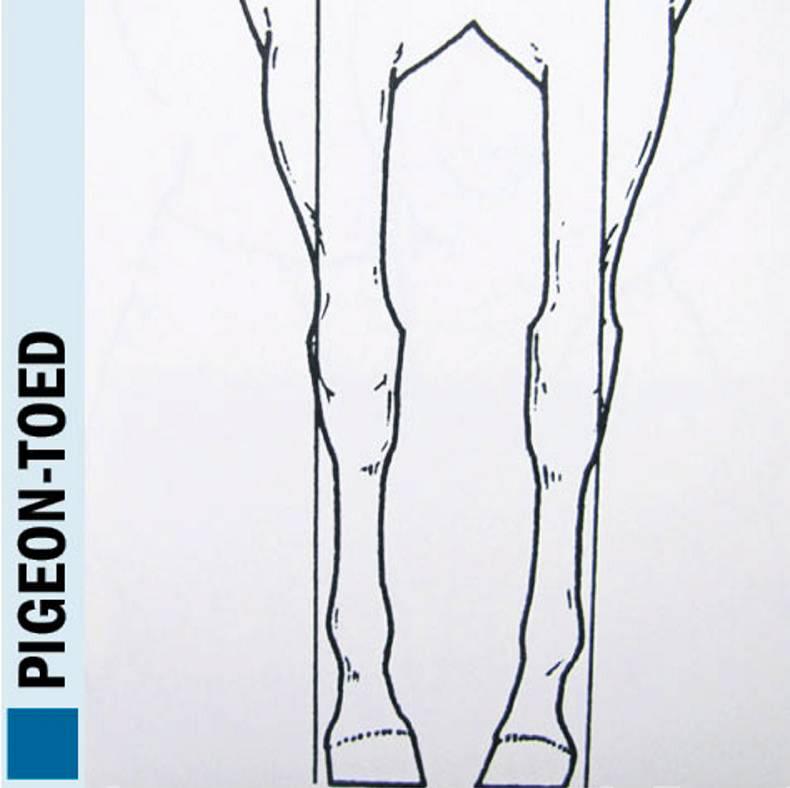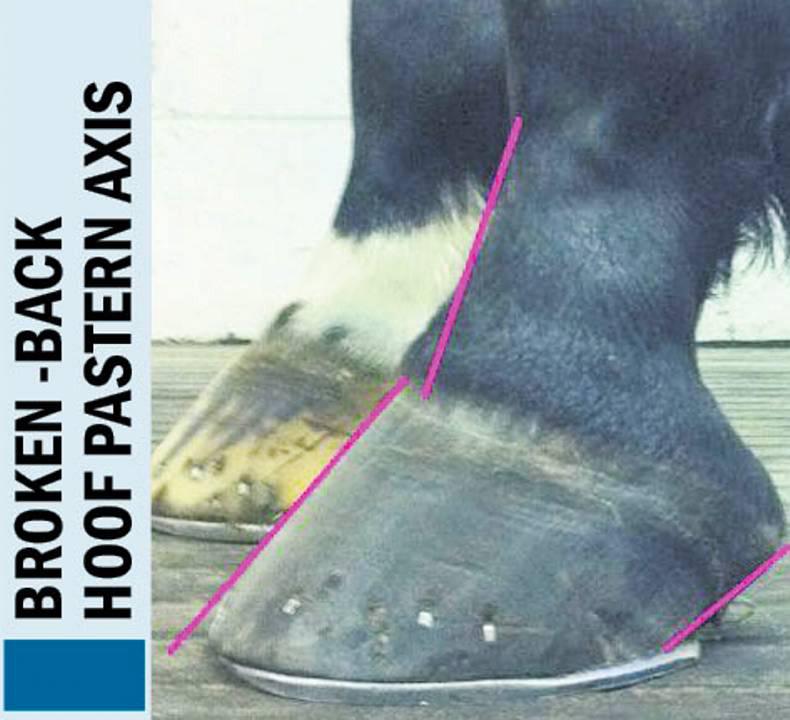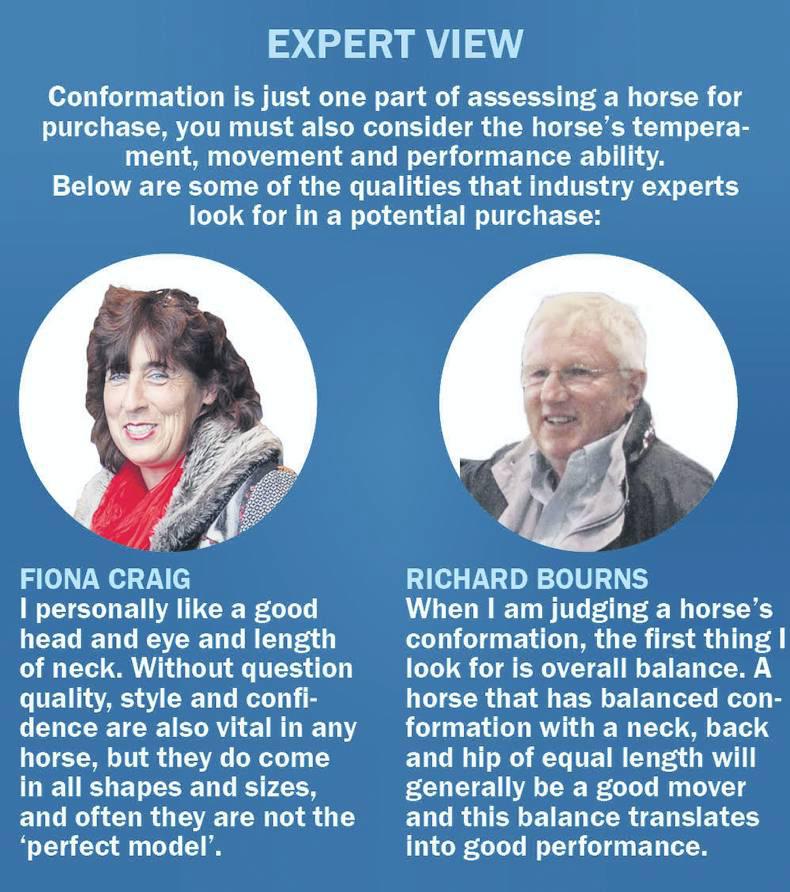LAST week in Horse Sense, Teagasc equine advisor, Declan McArdle, discussed the importance of taking a good photograph of a horse that is for sale. It has become the norm to upload photos and videos of horses for sale to the web as clients are reluctant to travel without first seeing a photograph of the horse.
Following on from last week, we now take a look at what prospective buyers should consider in regards to conformation when they are happy with their first impression of the horse online and are now going to view it. When it comes to conformation it is important to know what is desirable and what’s not, bearing in mind that horses are not always perfect, if the faults are minor or irrelevant to the job the horse has to do, they do not necessarily preclude purchase.
If the horse is in poor condition it takes an experienced person with a good eye to judge the horse’s potential. It takes skill to recognise whether, given the right care, the horse will develop into a worthwhile animal. A horse with good skeletal structure but poor muscle development can be transformed through suitable work and nutrition. Too much fat can also disguise a horse’s outline and make it difficult to judge what the horse will be like without the excess fat.
If the horse is in good condition the following are some of the features that should be sought.
HEAD

The set of the head on the neck is very important as it affects respiration and ease of flexion. The size and type of the head should suit the type of horse. There should be sufficient width between the branches of the lower jaw to allow room for the top of the windpipe. There must be room between the lower edge of the jaw bone and the jugular furrow to allow the horse to flex. The upper and lower jaw should be of equal length. If overshot (parrot mouth) or undershot the horse may have problems when biting grass, it will also make choosing a bit more difficult.NECK
The neck should not be set into the withers so low that there is a big dip
between it and the withers. The length of the neck should be in proportion to the horse’s body. The topline should be convex.
If the withers are too high it will make fitting a saddle difficult, if too low the saddle will work forward.SHOULDER AND CHEST

The shoulder should be deep with a definite slope forward from the withers to its point (illustrated by line ‘A’ in Figure 1).
This gives a longer more flowing stride.The horse’s chest should be of medium width,
this gives room for the heart.If the chest is very narrow it will increase the likelihood of the horse brushing it’s legs in front.BACK
The back should be of medium length and almost level.Long backs are liable to strain.Hollow backs are seen as a sign of weakness in young horses, but are also a sign of age in an older horse.A back that is arched upwards (roached back) can make it difficult to fit a saddle.QUARTERS
The hind-quarters are often referred to as the horse’s engine as it provides power.
The hips should be broad, rounded and a pair.A long croup (length from hip to point of buttock) is desirable.LIMBS

The forelegs should be straight from the top of the leg to the foot, when looked at from the front, and straight from the top of the leg to the front of the fetlock when viewed from the side (illustrated by the pink line in Figure 1).Deviation from a straight line when looked at from the front (eg. splayed feet or pigeon-toed) is a conformational fault which can put extra strain on the horse’s tendons ligaments and joints.The cannon bones should be short and straight.The forearm should be well developed and longer than the leg below the knee so as to minimise strain on the ligaments and tendons. Pasterns should be of a medium length, long sloping pasterns are liable to strain. Short upright pasterns tend to cause lameness through extra jar and concussion.When assesing the hind legs, there should be a straight line from the point of buttock through the point of hock down to the fetlock and the ground, deviation shows a weakness and places greater strain on the stifle and hocks.FEET

The angle of the hoof and pastern should match that of the shoulder (illustrated by lines ‘A’ and ‘B’ in Figure 1)Front feet and hind feet should be matching pairs.Front feet should slope at an angle of 45-50 degrees from the ground.The hoof wall should continue at the same angle as the pastern when viewed from the side.Where the angle of the hoof wall is lower than the angle of the pastern it creates a broken-back hoof pastern axis.The hind feet should have a slightly steeper slope and should be longer
and narrower than the front feet.All feet should point forward, a deviation is usually caused by poor conformation.Heels should be wide with a well-developed frog.Large flat feet can lead to problems such as sole bruising and corns.






